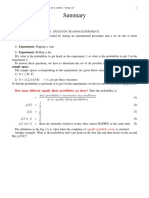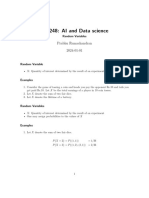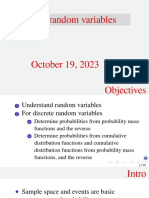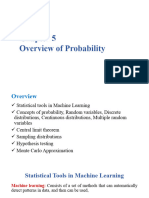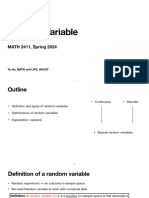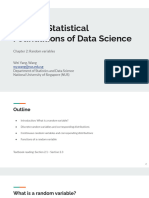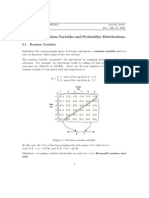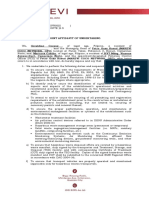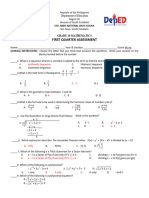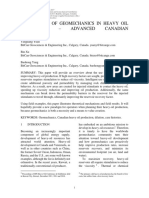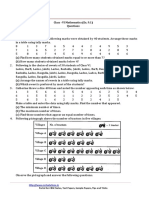0% found this document useful (0 votes)
10 views36 pagesRandom Variables Distributions
The document provides an overview of random variables and their distributions, defining random variables as mappings from a set of elementary events to real numbers. It discusses various types of distributions, including Bernoulli, Binomial, Poisson, and Normal distributions, along with their probability mass functions (PMFs) and cumulative distribution functions (CDFs). Additionally, it highlights the significance of random vectors and joint distributions in probability and statistics.
Uploaded by
lidijarasic1307Copyright
© © All Rights Reserved
We take content rights seriously. If you suspect this is your content, claim it here.
Available Formats
Download as PDF, TXT or read online on Scribd
0% found this document useful (0 votes)
10 views36 pagesRandom Variables Distributions
The document provides an overview of random variables and their distributions, defining random variables as mappings from a set of elementary events to real numbers. It discusses various types of distributions, including Bernoulli, Binomial, Poisson, and Normal distributions, along with their probability mass functions (PMFs) and cumulative distribution functions (CDFs). Additionally, it highlights the significance of random vectors and joint distributions in probability and statistics.
Uploaded by
lidijarasic1307Copyright
© © All Rights Reserved
We take content rights seriously. If you suspect this is your content, claim it here.
Available Formats
Download as PDF, TXT or read online on Scribd
/ 36




